Archive View
Grid View
List View
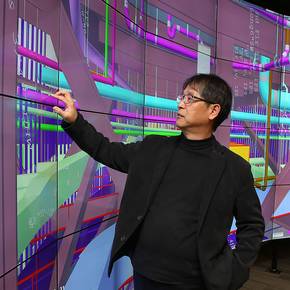

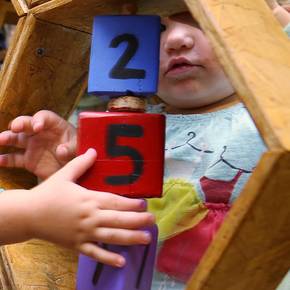


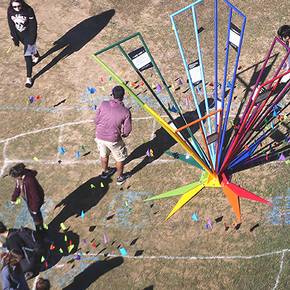
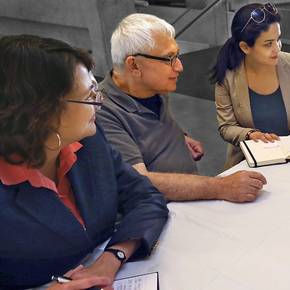


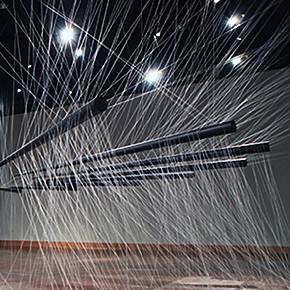

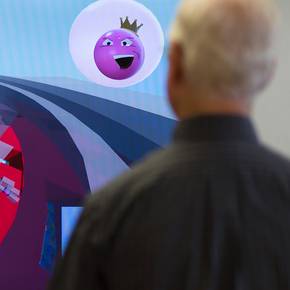

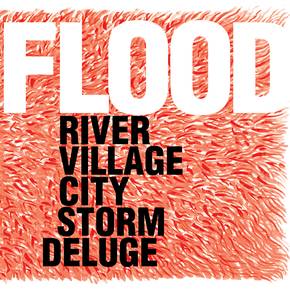

archone gallery

New BIM CAVE facilitates students' 3-D visualizations
posted
December 14, 2015
Futuristic, immersive journeys through and around virtual 3-D buildings created by Texas A&M construction science students highlighted final reviews for a fall 2015 building information modeling class led by Julian Kang, associate professor of construction science.

Viz professors' visor software to enhance human sight, hearing
posted
December 8, 2015
The ability to see and hear beyond the spectrum of human sensitivity could be granted to those who don a Microsoft visor equipped with new software created by Carol LaFayette and Frederick Parke, visualization faculty members at Texas A&M University.

Student-designed playscapes thrill daycare children
posted
December 8, 2015
When it’s playtime for children at the St. Thomas Aquinas Child Development Center, they’ll be able to frolic on four new play structures designed and built by students from the Texas A&M College of Architecture.

Design contest yields multipurpose center for historic city block
posted
December 2, 2015
An almost empty lot near downtown Bryan, home to two of the city’s oldest buildings, is transformed into a new, versatile community center in several designs imagined this fall in a Texas A&M graduate architecture student design competition.

Landscape programs again ranked among best in the nation
posted
November 16, 2015
Texas A&M’s landscape architecture programs were once again ranked prominently in an annual report on nation’s best design programs compiled by the Design Futures Council, a global network of design professionals.

Public helps create topographic maps of emotions
posted
November 12, 2015
As part of GIS Day at Texas A&M, the public helped artists, geographers and urban planners map some of the less tangible features of the Bryan/College Station landscape as they work to create a geospatial record of the region’s emotional topography.

College researchers investigate ‘smart’ materials in study
posted
October 23, 2015
The characteristics of new “smart” materials that, with further development, could harvest energy, water and air when embedded in a building’s exterior, are the focus of a two-year, $240,000 National Science Foundation study undertaken by TAMU faculty and students.

Wright Gallery to exhibit award- winning designs
posted
October 23, 2015
The award-winning residential designs of Austin-based Alterstudio are showcased in “6 Houses,” an exhibit running through Jan. 19, 2016 in Wright Gallery, located on the second floor of the Langford Architecture Center’s Building A at Texas A&M University.

Built environment’s effect on health is subject of research
posted
October 8, 2015
Can moving to an activity-friendly neighborhood enhance the health of previously sedentary residents? That’s one of many questions at the intersection of public health and the built environment to be considered by researchers in a $2.7 million active living study.

Variety highlights Wright Gallery 2015-16 lineup
posted
October 5, 2015
Through next summer Wright Gallery patrons will experience drawings of increasingly inundated landscapes, a room-sized architectural installation, art protesting sexism, and exhibits featuring residential home designs and Texas landscape photography.

Water cleansing project, planning book earn honors
posted
September 29, 2015
A master plan created by Texas A&M graduate landscape architecture students that showcases “green” methods to cleanse storm water runoff and a ecological design and planning book compiled by the LAUP department head, earned 2015 Texas ASLA awards.

Students created games in 48 hours at 2015 Game Jam
posted
September 23, 2015
Student video game developers from universities across the nation gathered Oct. 23-25, 2015 on the Texas A&M campus for “Chillennium,” a 48-hour video game-building competition hosted by the Learning Interactive Visualization Experience Lab.

College spotlighted faculty research at annual symposium
posted
September 10, 2015
The Texas A&M College of Architecture’s 17th annual faculty research symposium, “Natural, Built, Virtual,” took place Oct. 19, 2015 at the Langford Architecture Center on the Texas A&M College Station campus.

Ciani's ‘flood’ exhibit inundates gallery through Oct. 14
posted
August 20, 2015
Artist Mary Ciani, recently retired from the Texas A&M visualization faculty, uses water imagery to emote feelings from tranquility to rage in a series of 40 increasingly inundated landscapes visualizing, in part, the consequences of global climate change.

College honors outstanding alumni at Oct. 23 ceremony
posted
June 24, 2015
Six former students from Texas A&M’s College of Architecture who have risen to the top of their respective fields while making significant public service contributions were honored as outstanding alumni during an Oct. 23, 2015 banquet at the Miramont Country Club in Bryan.
Follow Us
Facebook Twitter Vimeo Youtube Flickr RSS
Recent Posts

Planning prof heads study of disaster housing aid
June 12, 2020

A message from the dean
June 2, 2020

Former student remembered as expert planner
April 16, 2020

Leading educator named new head of Architecture Dept.
April 1, 2020

COVID-19 tests given in student-built clinic
March 30, 2020



_thumbnail_small.png)
